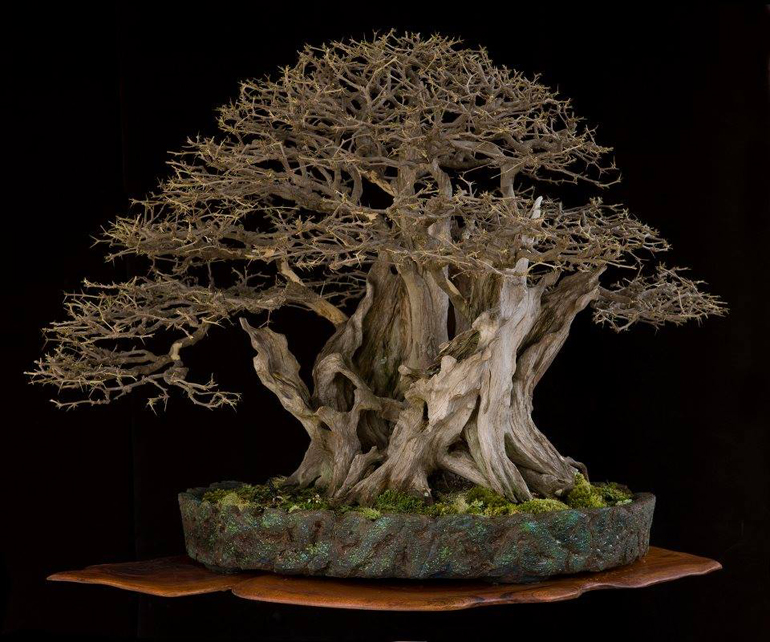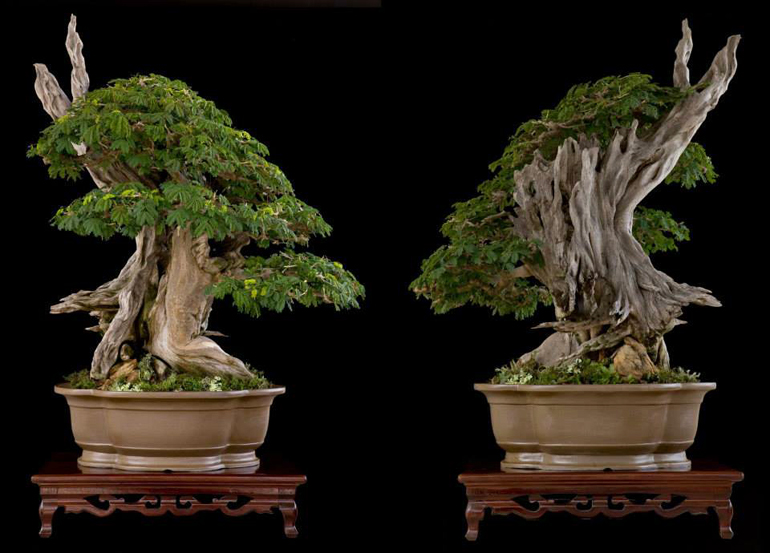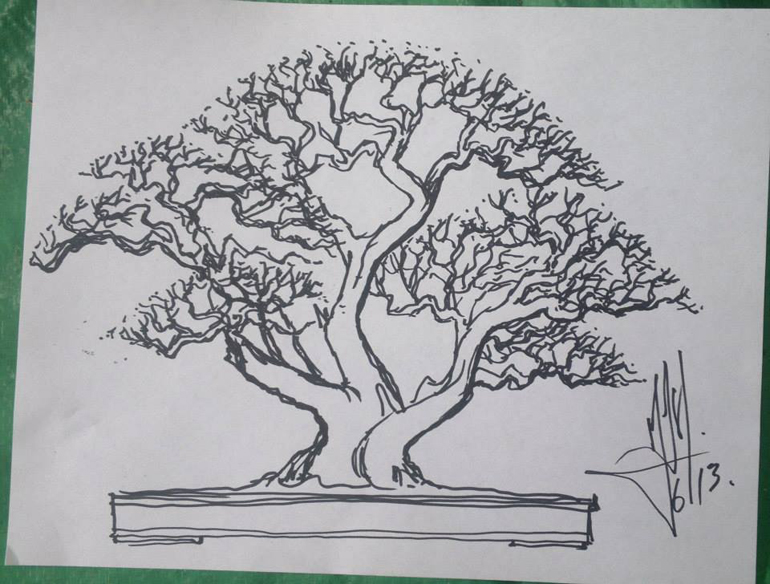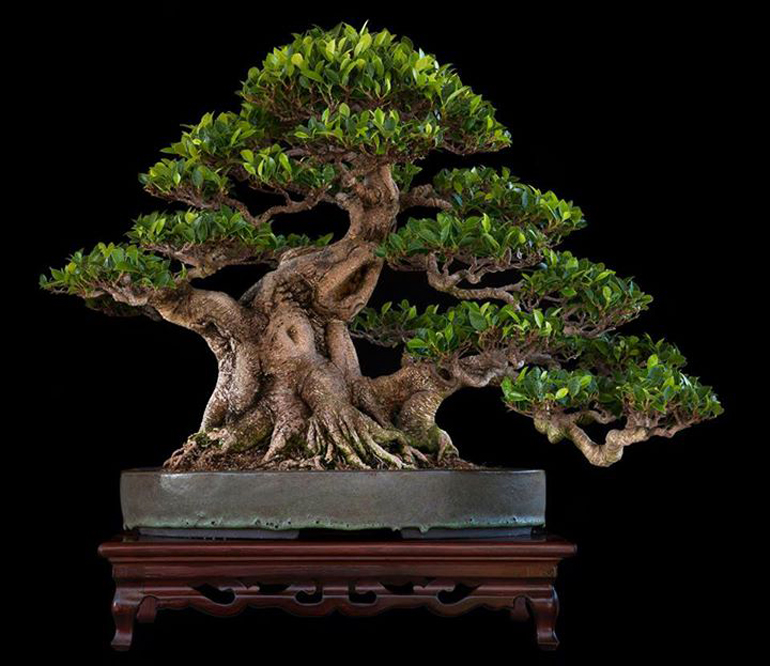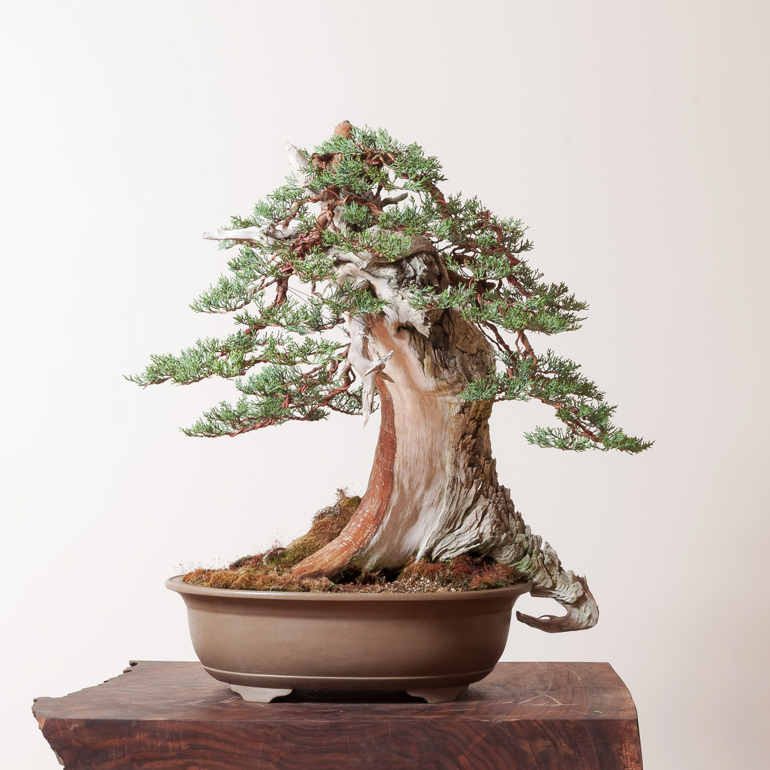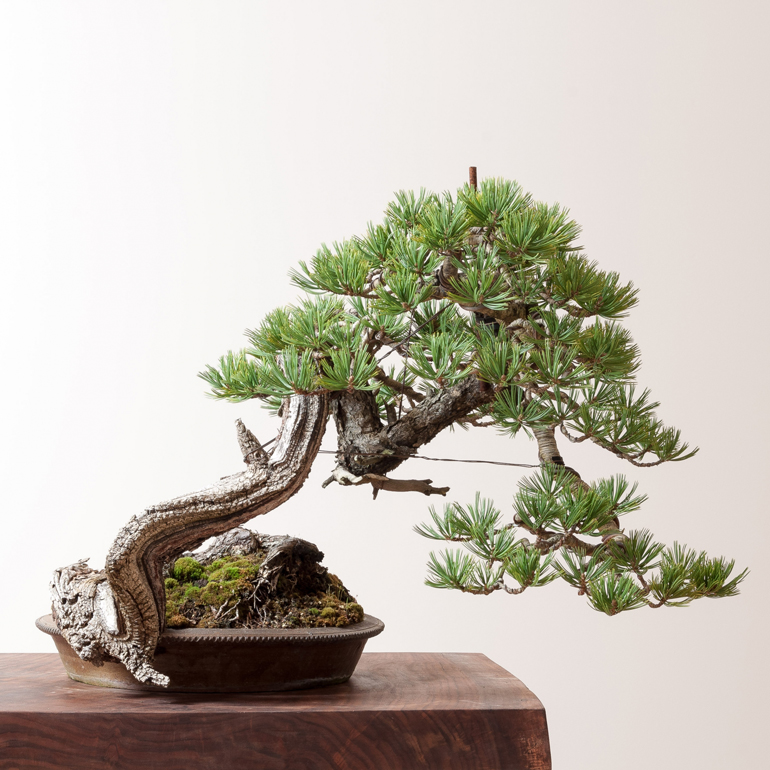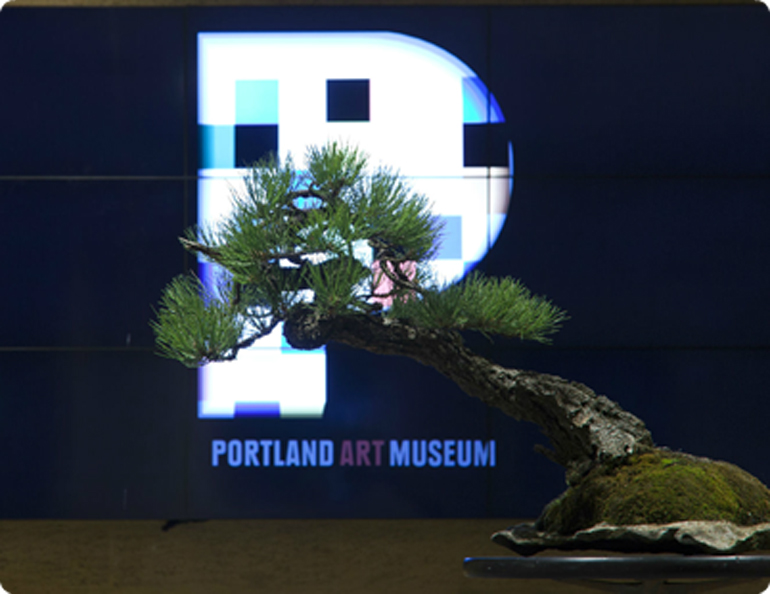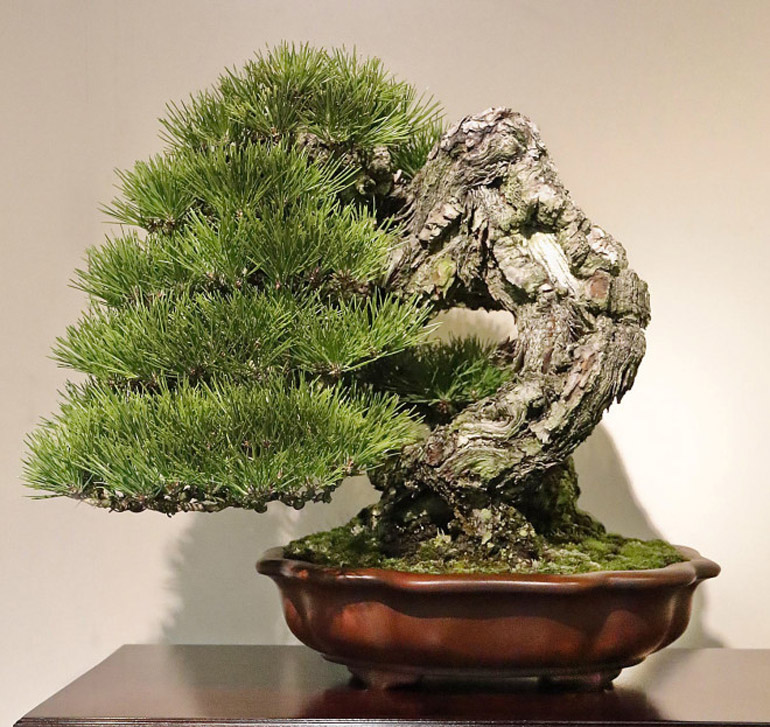 Though any Kokufu bonsai might work, this
Though any Kokufu bonsai might work, this Japanese white pine looks like a good tree to lead with. Besides, I’ve got a soft spot for short muscular trees. Especially short muscular trees whose scarred bark and hunched stance tell a story of hard times and harsh conditions, while its lush foliage and vibrant strength tell a story of better times and full recovery. This and all the other photos shown here are from Bill Valavanis’ blog, Welcome To My Bonsai World.
Kokufu, the world’s premier (and oldest) Bonsai Exhibition is in full swing. Those of us not fortunate enough to be there will have have to settle for the photos and descriptions of others. In this case the other is Bill Valavanis. A good place to start.
All the photos shown here are lifted directly from Bill’s blog, Welcome To My Bonsai World. His account of this year’s world famous Kokufu Bonsai Exhibition is first hand and what you see here is only a small sampling of the photos and text you’ll find on his blog.
Here’s some of what Bill has to say about Kokufu: I hope you have enjoyed my photos of both parts* of this year’s Kokufu Bonsai Exhibition. If you want to see better photos of the masterpiece bonsai on display, kindly subscribe to International BONSAI. The official exhibition album showing over 400 individual bonsai will also be available from my web site as well.
Our bonsai tour is not over yet and I still have more photos, visits and experiences to share with friends, but need to find the time to process the photos. More coming……
*Due to limited space and the large number of bonsai accepted, Kokufu is divided into two stages this year, each four days long. The second stage ends in two days.
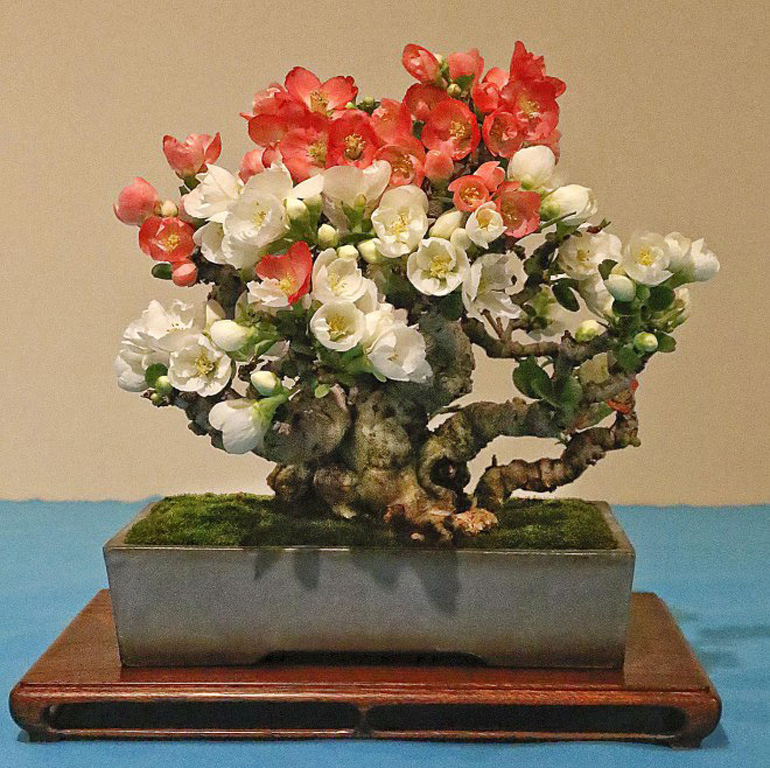
There’s something about Quince flowers… Here’s Bill’s caption: A small size Toyo Nishiki Japanese flowering quince, Chaenomeles speciosa ‘Toyo Nishiki’ with multiple colored flowers. Although red, pink and white blossoms are common for this great cultivar, I’ve often seen red branches grafted onto specimens to improve color distribution.

Another Quince (“Chinese quince, Pseudocydonia sinensis, created from air layering the top off another bonsai”). No flowers this time, bit plenty of action nevertheless. At the risk of stating the obvious (and once you’ve gotten past the tree’s sheer compact power), you might notice the exfoliating bark. Not to mention (but to mention) that most amazing pot.

We could have titled this post Quince and Kokufu. Like the tree just above it’s a Pseudocydonia sinensis.
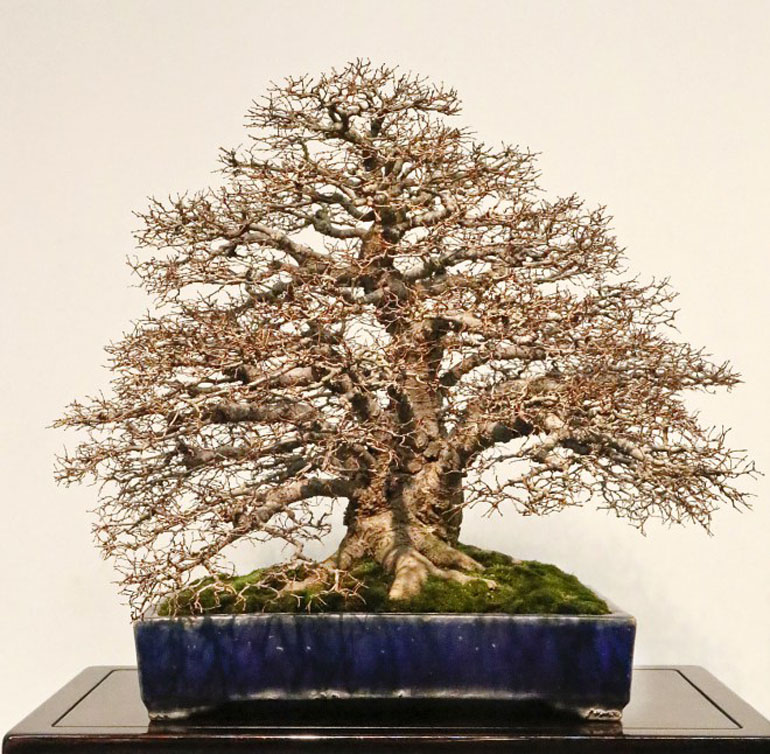
Not a quince, but a Japanese grey-bark elm (Zelkova serrata).
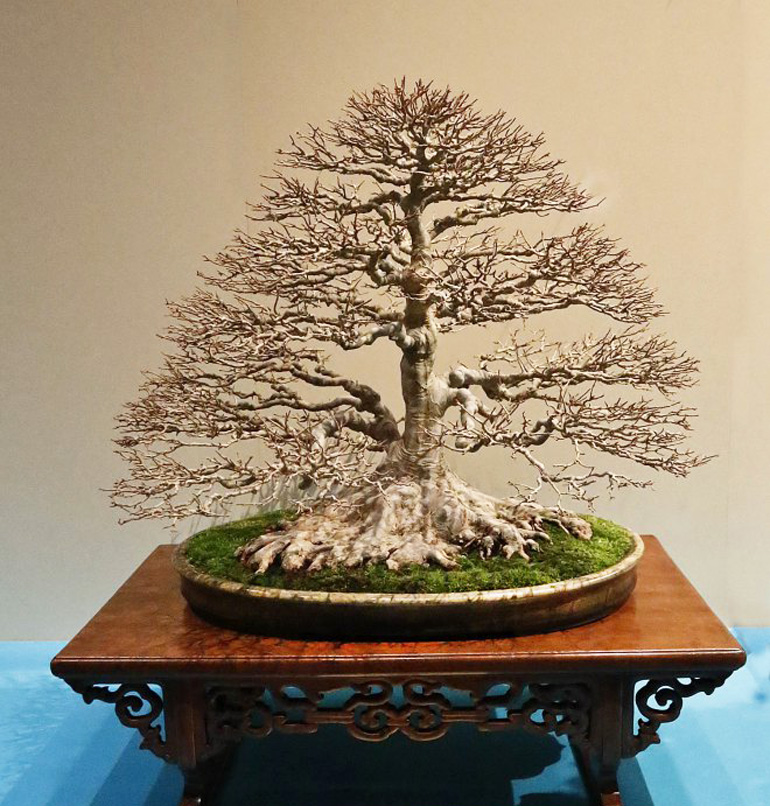
You might get the impression that Kokufu is mostly about deciduous bonsai, but I don’t think that’s really the case (though winter is a great time show off these beauties in their leafless splendor). This one with its massive nebari could only be a Trident maple.
Visit Bill Valavanis’ blog, Welcome To My Bonsai World to enjoy many more great Kokufu bonsai.

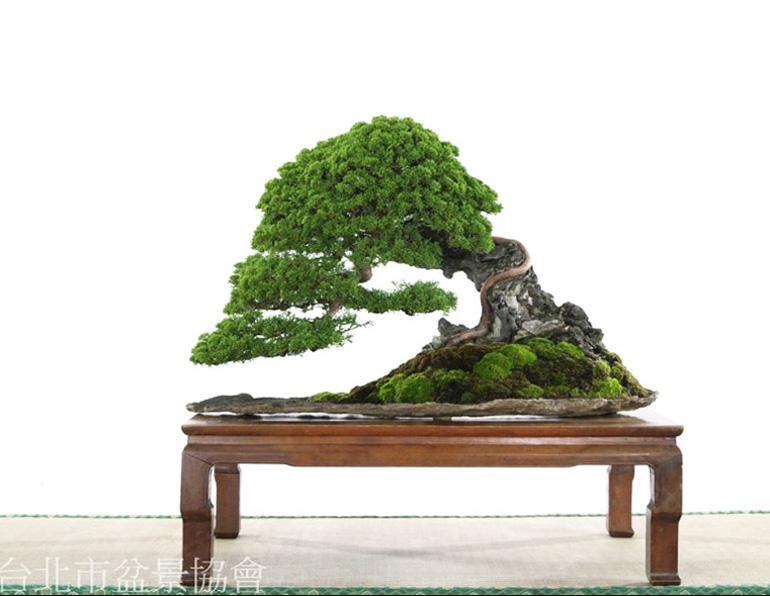 Looks like another Taiwanese juniper with a striking sinuous live vein snaking its way up a stone (how’s that for alliteration?). Here’s the caption: 2014, with Chinese-style bonsai exhibition award category: gold medal species: Fish River Cypress bonsai collection: Lin Chi
Looks like another Taiwanese juniper with a striking sinuous live vein snaking its way up a stone (how’s that for alliteration?). Here’s the caption: 2014, with Chinese-style bonsai exhibition award category: gold medal species: Fish River Cypress bonsai collection: Lin Chi
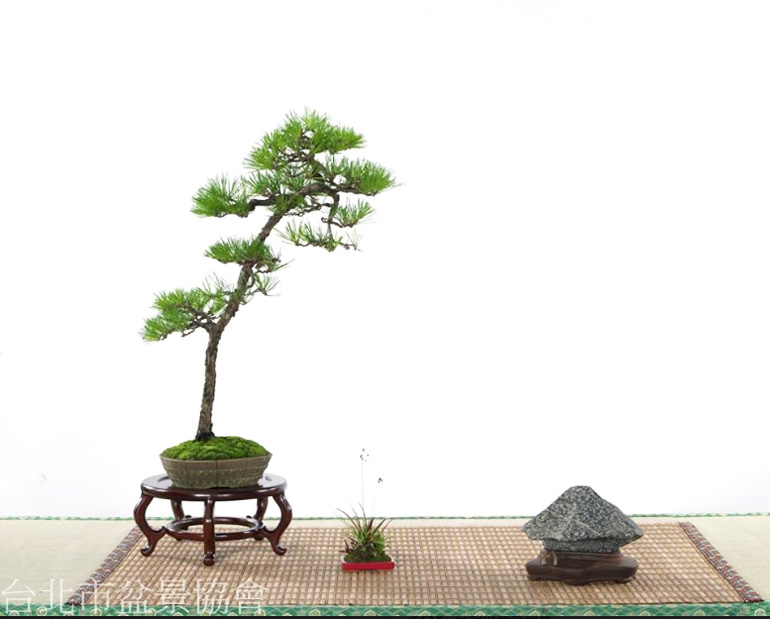

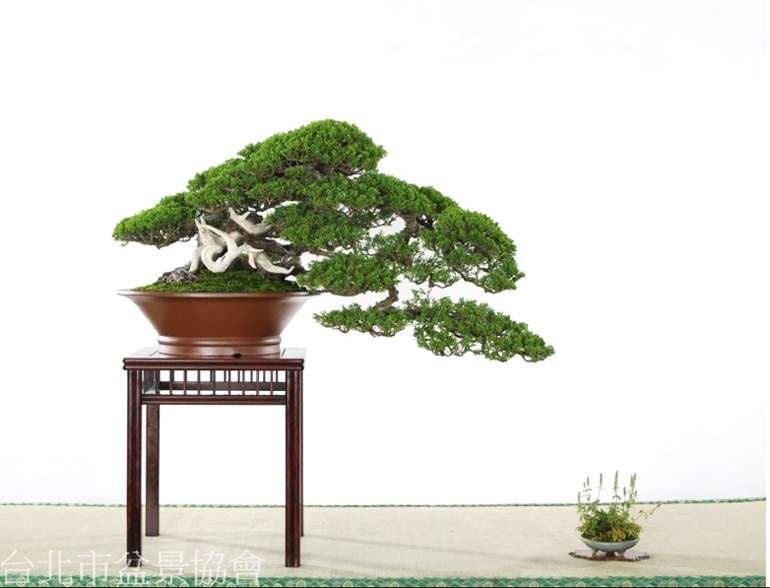
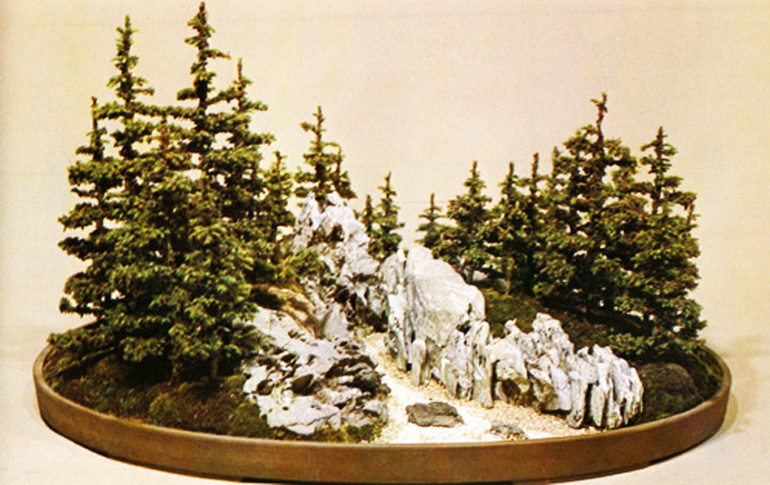
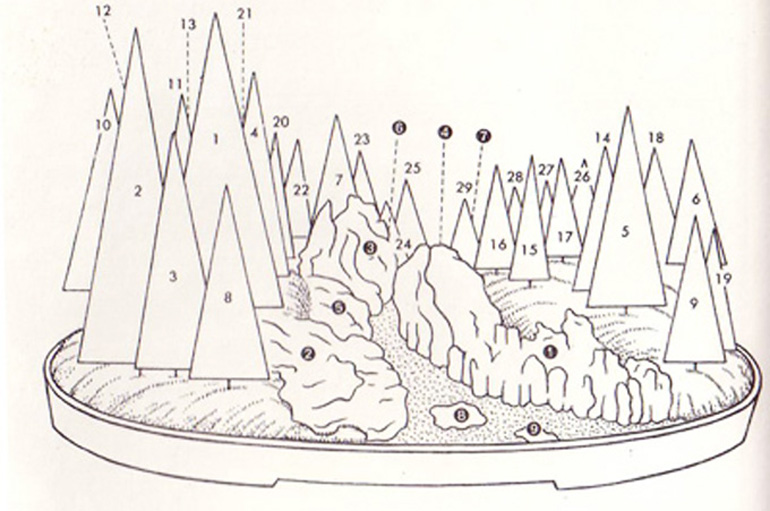
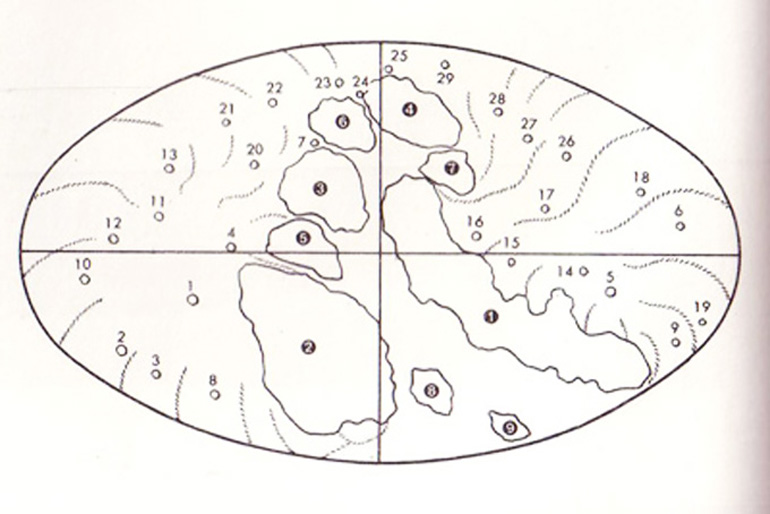
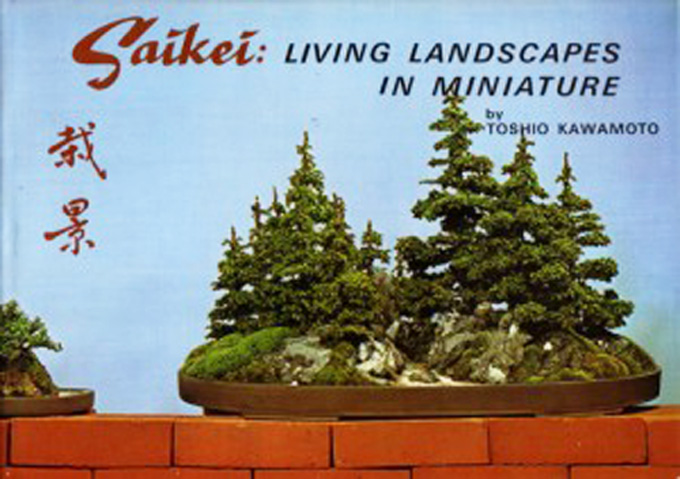
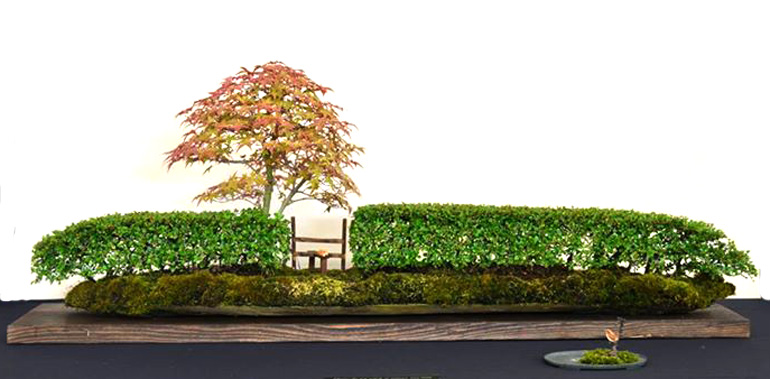
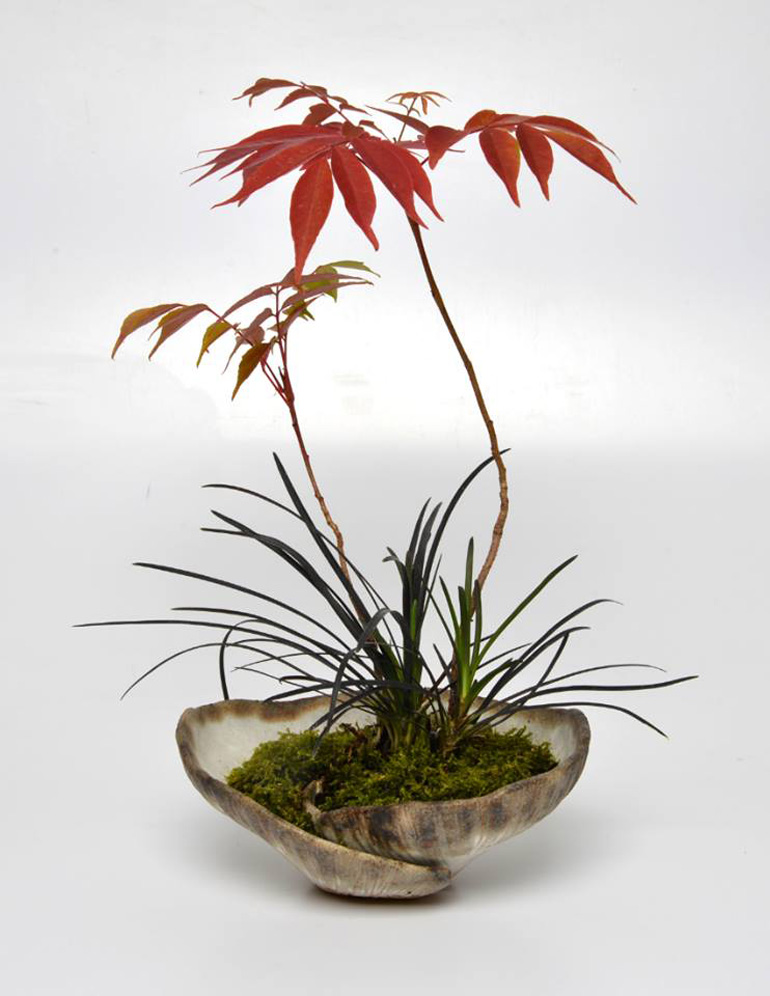 Here’s something else by
Here’s something else by 



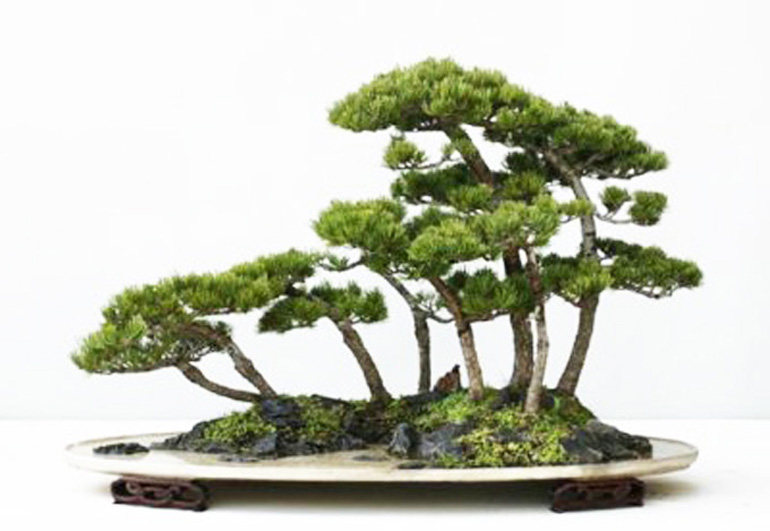

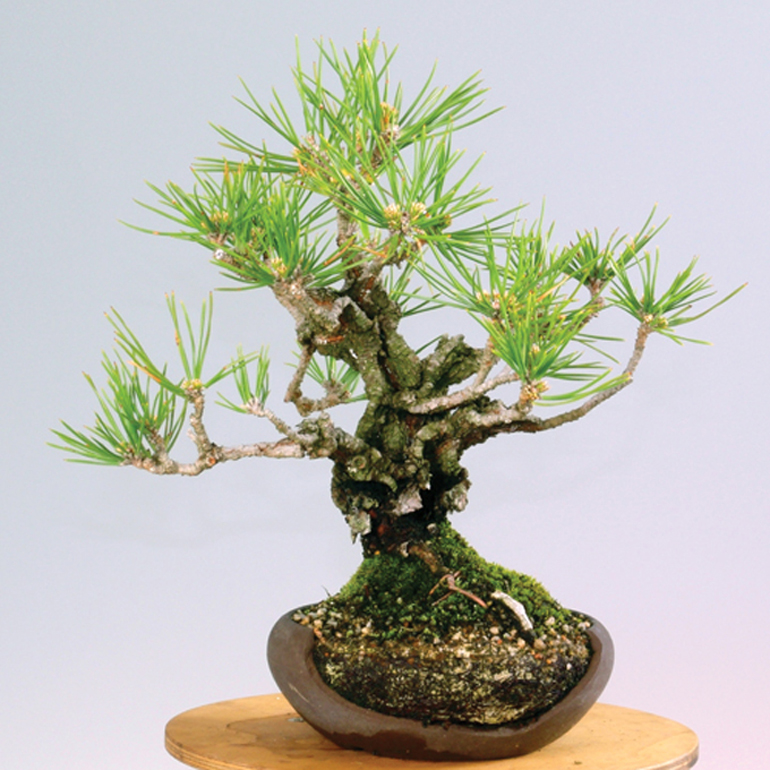

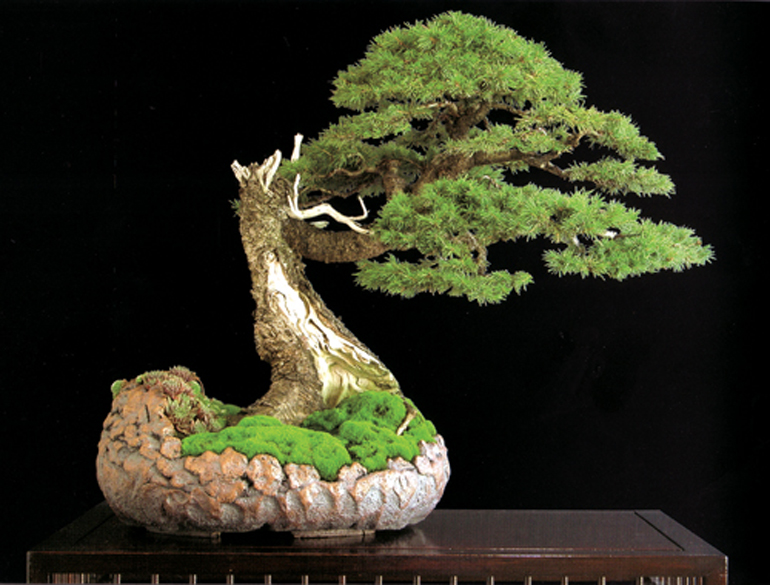
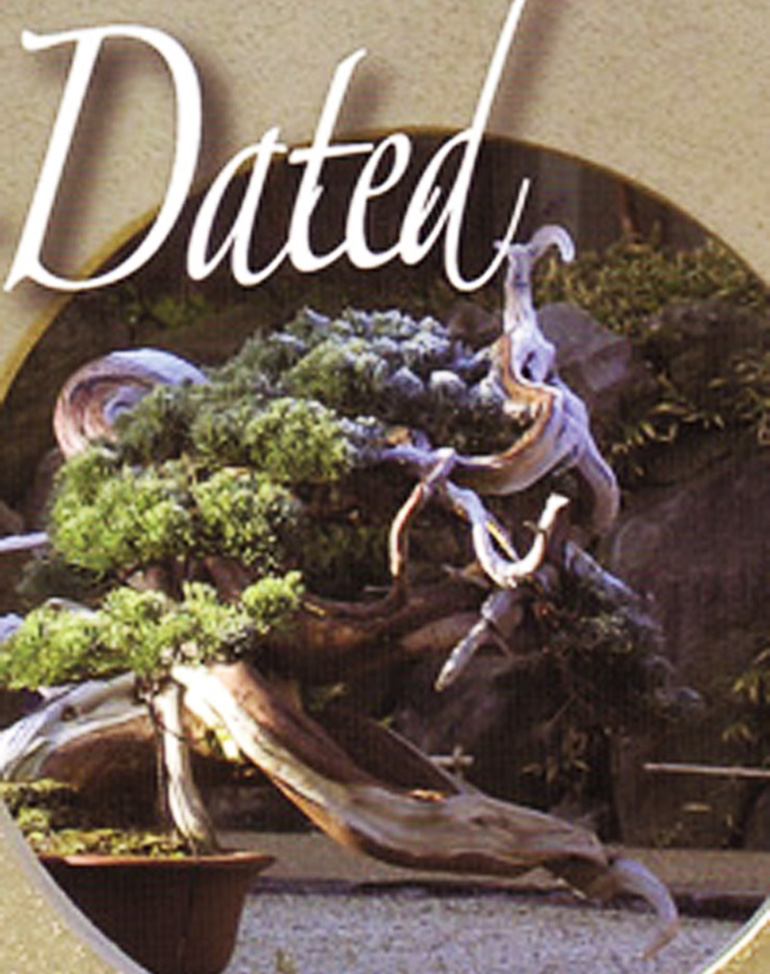

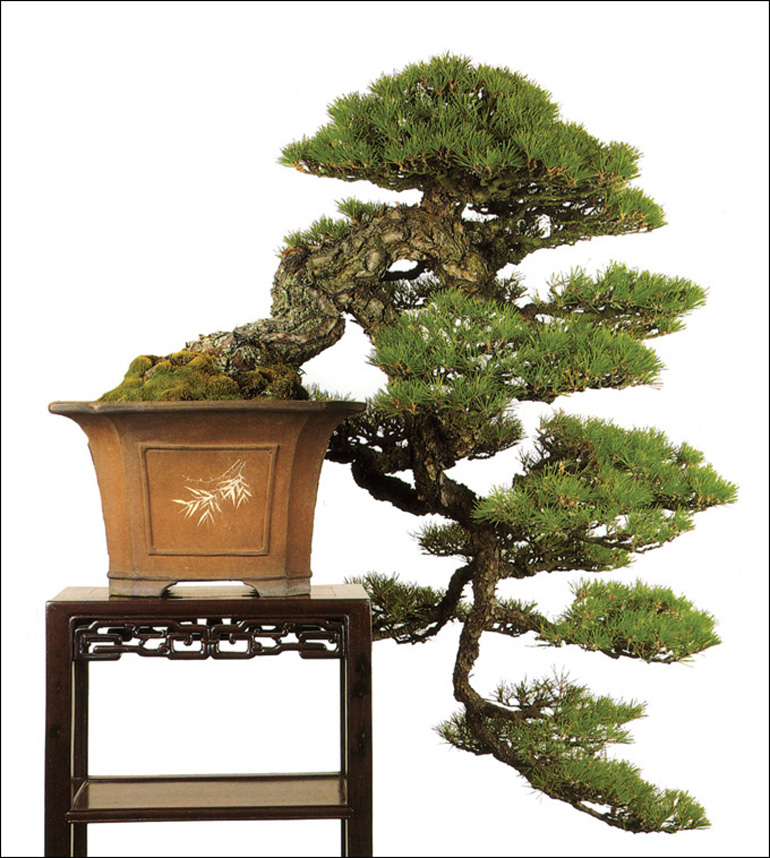

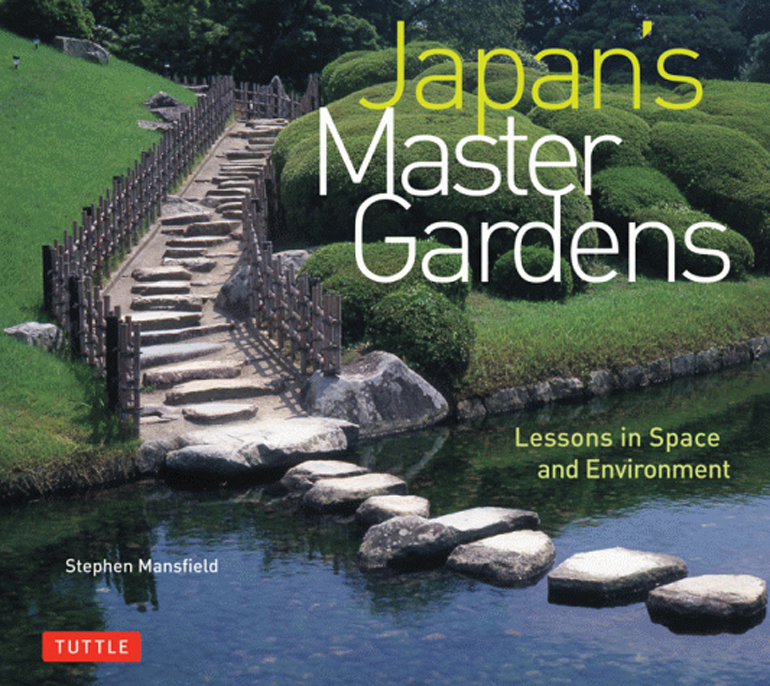

 Lakeside with Lingering Snow, our second in a series of plantings from
Lakeside with Lingering Snow, our second in a series of plantings from  Front schemata. The pot is 26″ x 13″ (66cm x 33cm) unglazed oval by Tokoname. There are 27 cryptomeria that range from 2.5″ to 4.5″ (6cm to 11.5cm) tall. The soil is regular bonsai soil (he doesn’t say which regular bonsai soil, but the Japanese almost always use akadama or an akadama mix for conifers). The other materials are peat (it’s unclear how he uses it, see below), green moss and black river pebbles (the lake).
Front schemata. The pot is 26″ x 13″ (66cm x 33cm) unglazed oval by Tokoname. There are 27 cryptomeria that range from 2.5″ to 4.5″ (6cm to 11.5cm) tall. The soil is regular bonsai soil (he doesn’t say which regular bonsai soil, but the Japanese almost always use akadama or an akadama mix for conifers). The other materials are peat (it’s unclear how he uses it, see below), green moss and black river pebbles (the lake). Bird’s eye view. The lake (or piece of it) is off center which helps create a natural, uncontrived feel. The landscape is soft and inviting. This softness is enhanced by the way the hills and the rock flow into each other (the photo and front schemata show this best). The small size of the trees (much smaller than the
Bird’s eye view. The lake (or piece of it) is off center which helps create a natural, uncontrived feel. The landscape is soft and inviting. This softness is enhanced by the way the hills and the rock flow into each other (the photo and front schemata show this best). The small size of the trees (much smaller than the 
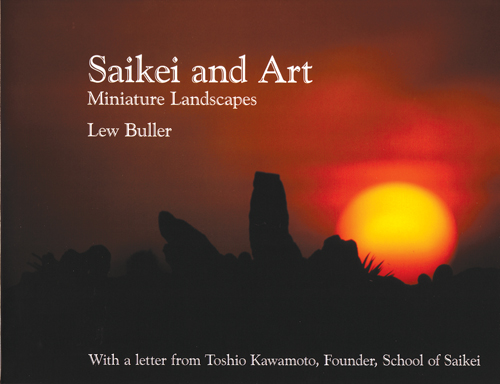 To best of my knowledge, Lew Buller’s
To best of my knowledge, Lew Buller’s 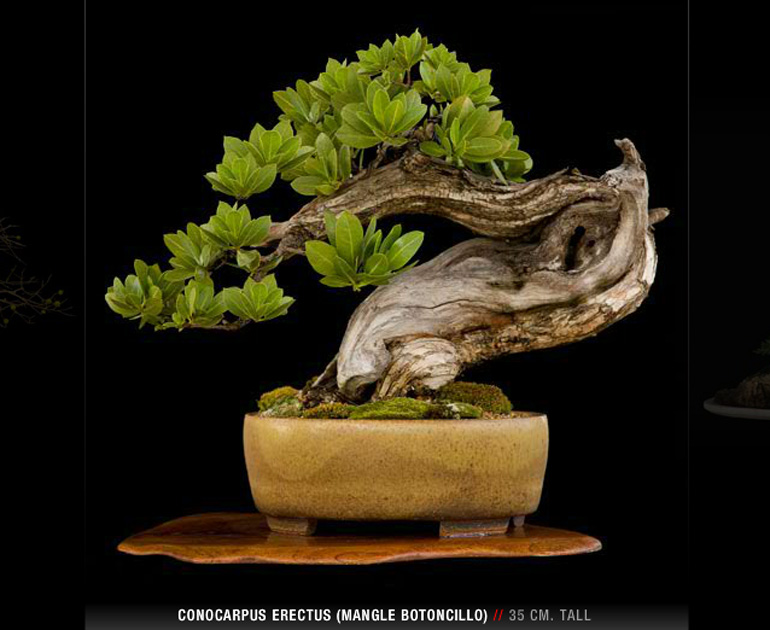
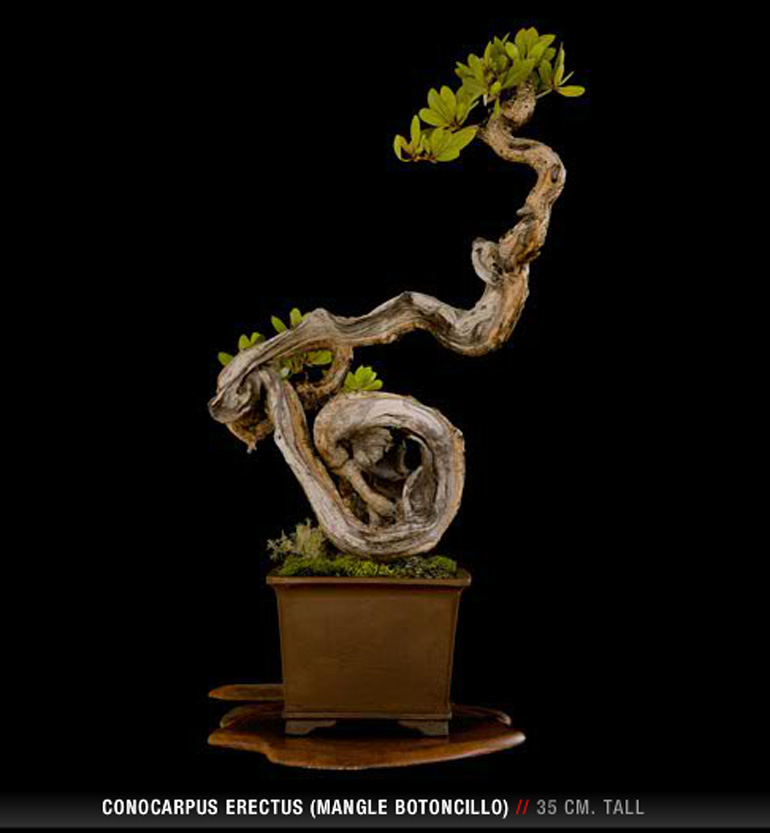

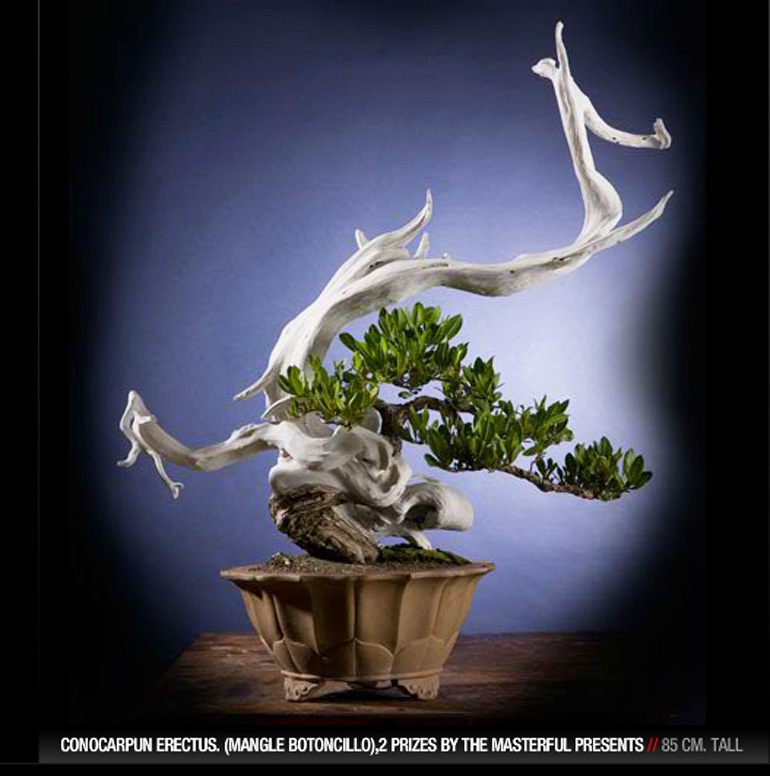
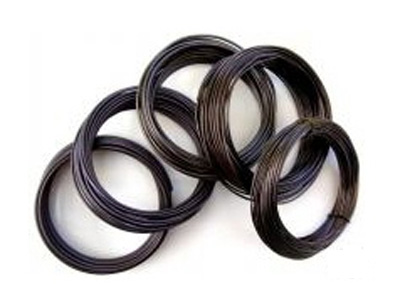
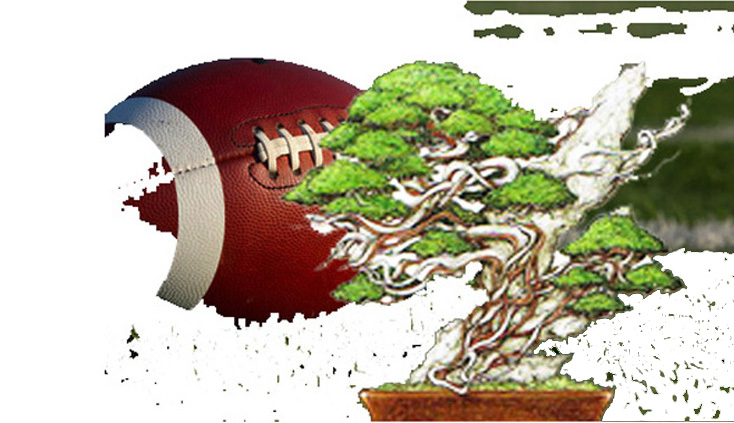 This might pass as artistic to an unsophisticated viewer, but it’s really just a miserably failed photoshop effort. The bonsai drawing is by
This might pass as artistic to an unsophisticated viewer, but it’s really just a miserably failed photoshop effort. The bonsai drawing is by 
